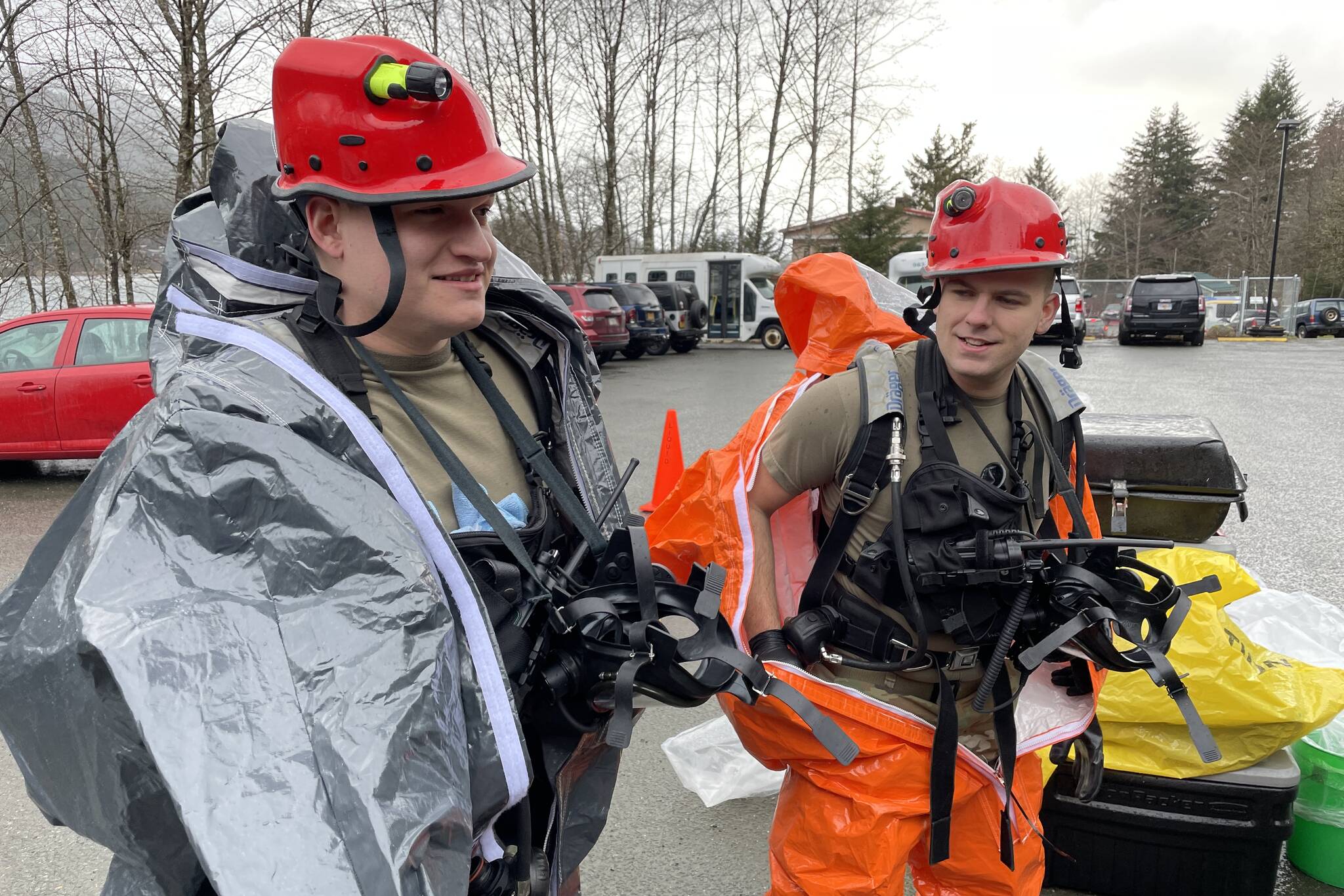Tripwires, drug labs and unsecured radiological material aren’t commonplace sights in Juneau, but beginning on Tuesday, members of the local emergency services, military and other federal organizations started picking through exercises across town with simulations of just that.
Dozens of National Guardsmen and members of various agencies dealing with hazmat emergencies are in Juneau for an interoperability exercise.
“You should train at a higher level than what the test is,” said National Guard Maj. Pete Browning, deputy commander of the 103rd Civil Support Team of the Alaska National Guard. “That’s what this is.”
[Dates set for race to fill House seat]
Members of the Juneau Police Department and Capital City Fire/Rescue are working with the 103rd CST and other civil support teams from Montana, Mississippi, North Carolina and Connecticut that came to take part in the exercise, Browning said. A large part of the exercise is training and familiarization between civil and military organizations, so they mesh smoothly in the case of a suspected hazmat emergency.
“The planning for this probably started last May,” Browning said. “We as a CST ride that line between civilian and military; we can talk to both.”
There are 57 CST teams distributed across the United States and its territories, Browning said. These exercises are commonplace, though it’s been several years since one was held in Juneau, said JPD Lt. Jeremy Weske.
“It’s hard to put on something of this magnitude without outside help,” Weske said in an interview. “It’s very good training to get exposed to all these types of issues we might get exposed to.”
JPD’s explosive ordnance disposal specialists assisted FBI EOD personnel in clearing the simulated hazmat areas, clearing the way for the hazmat specialists to sweep the area, Weske said.
“What’s usually most impressive is the resources, training and equipment the National Guard and the federal government has,” Weske said. “They’re always happy to share that training with us.”
Other organizations involved in the exercise are the Department of Energy’s Radiological Assistance Program, based out of Washington.
“So for the CSTs, they do chemical/biological/radiological (hazards). We’re kind of the subject matter experts for anything radiological/nuclear,” said RAP team 8 equipment coordinator Jeff Berneski in an interview. “We do everything left of boom and right of boom.”
The RAP team responds to all sorts of situations, from calls from the FBI to things like the 2019 Harborview Medical Center cesium-137 breach, Berneski said. That incident involved an accidental breach of sealed container of radioactive cesium-137, which resulted in the contamination of workers, observers and the environment, according to an afteraction report by the National Nuclear Security Administration.
The buildings being used for the exercise, including the Hagevig Fire Training Center, had areas that simulated a number of hazardous materials, including homemade explosives, illegal drug manufacturing, manufacture of poisonous or biologically dangerous substances such as poison gas, radiological hazards and other situations that hazmat teams have encountered in the United States.
Once EOD specialists cleared the buildings, eliminating possible triggers like tripwires and pressure pads, hazmat specialists would don their suits and enter the buildings to assess the threats. A lot of the training was teaching local agencies such as CCFR and JPD both how to identify common hazmat threats, as well as how to work with teams like the CSTs or RAP teams, Berneski said.
• Contact reporter Michael S. Lockett at (757) 621-1197 or mlockett@juneauempire.com.

